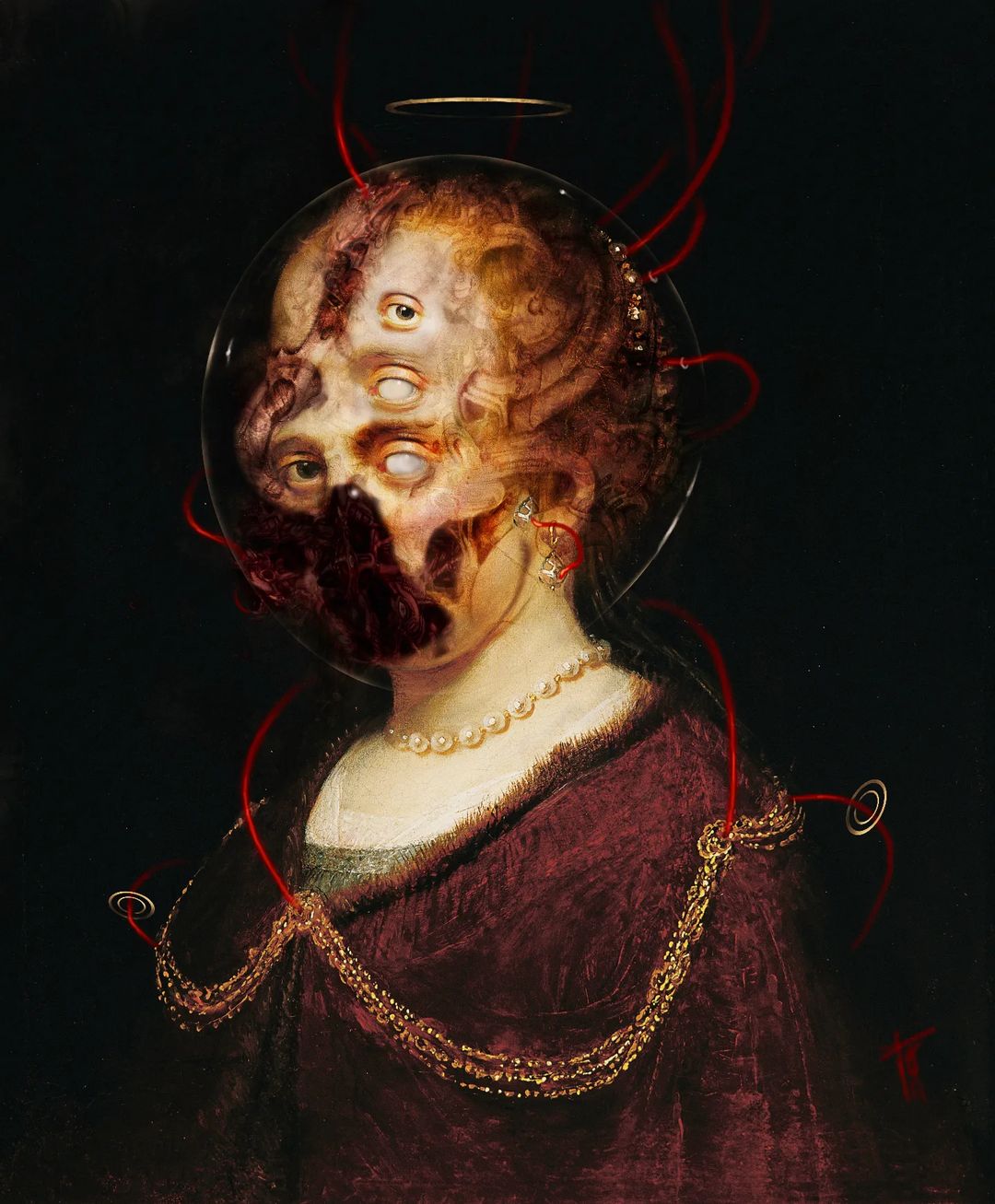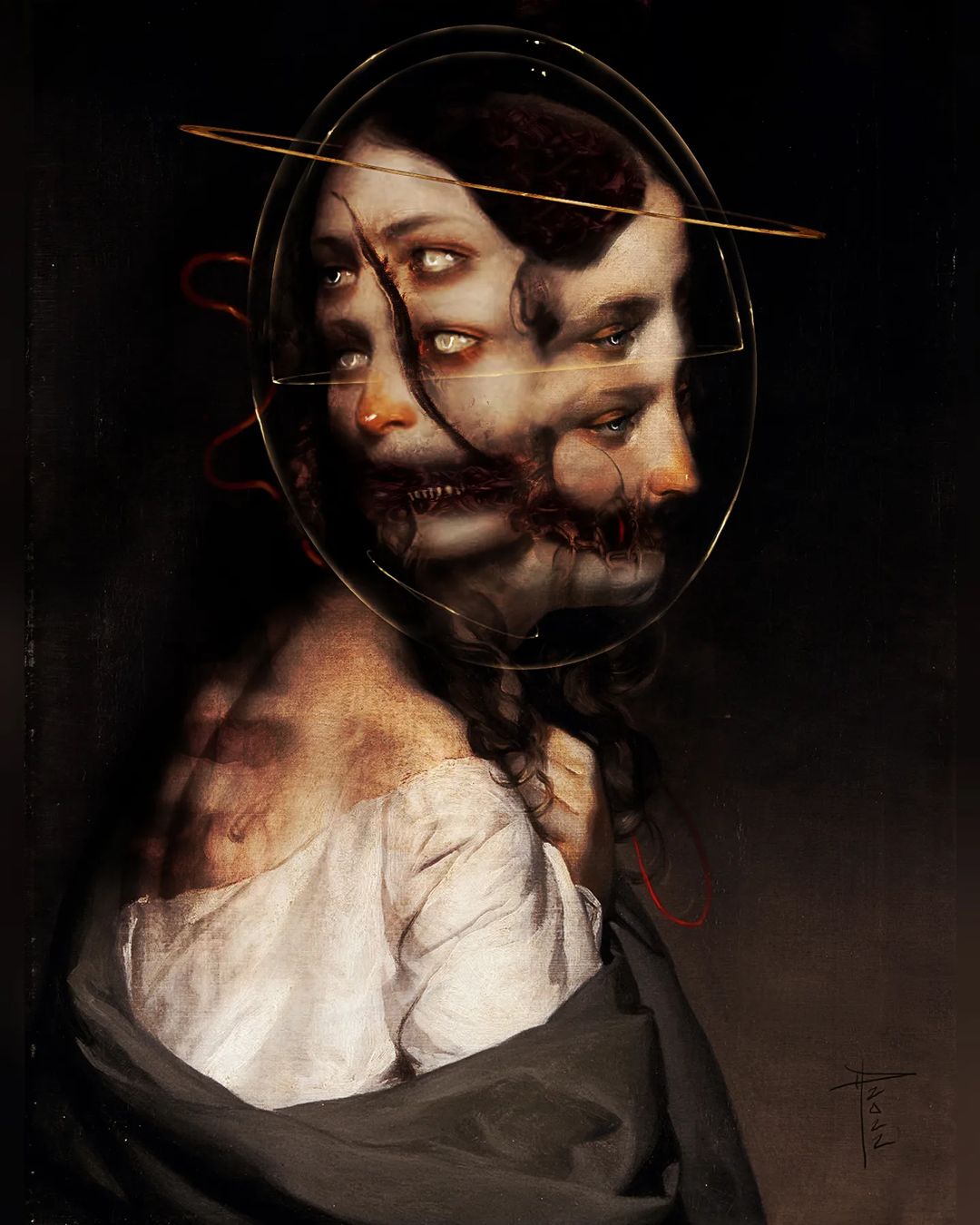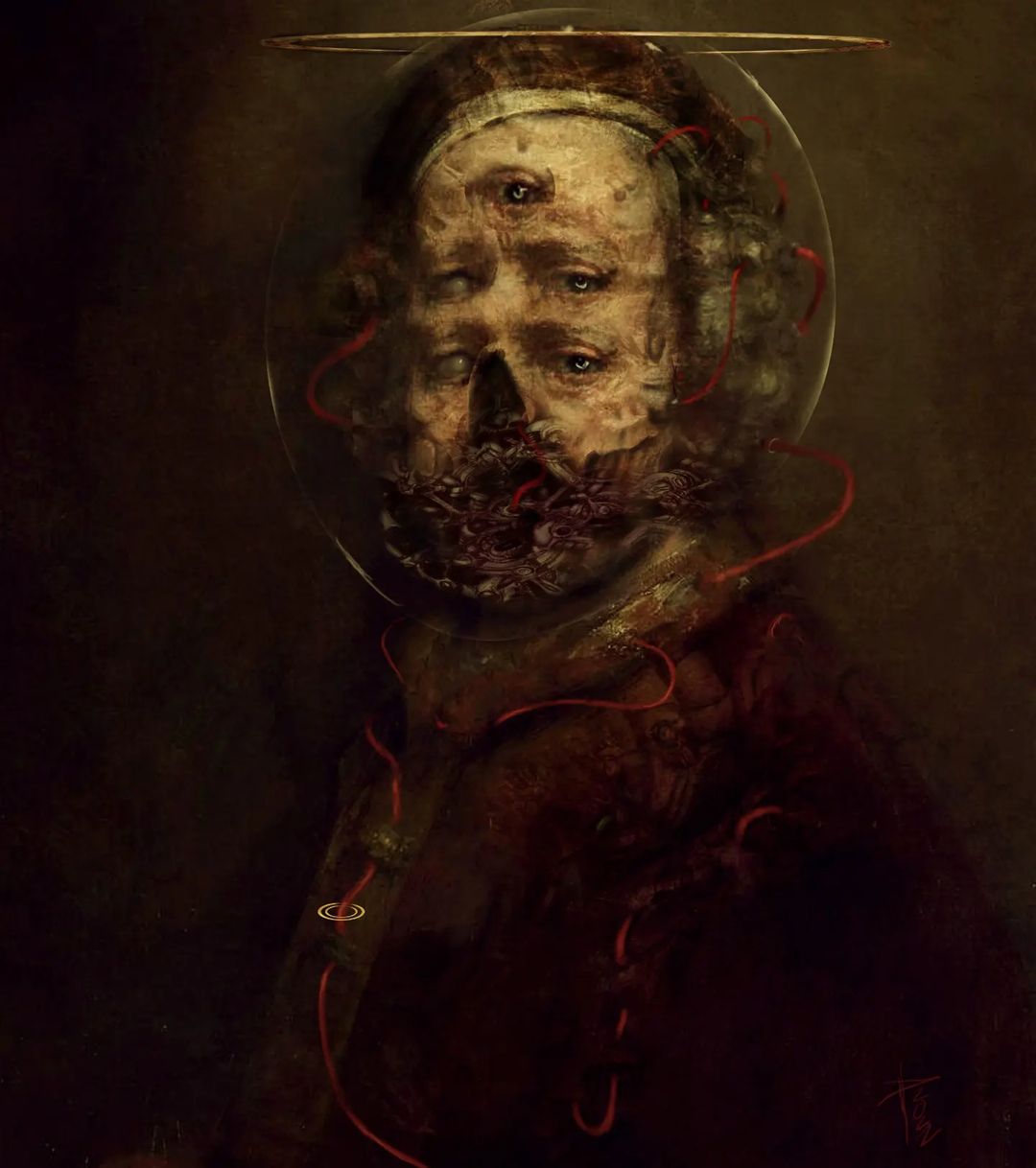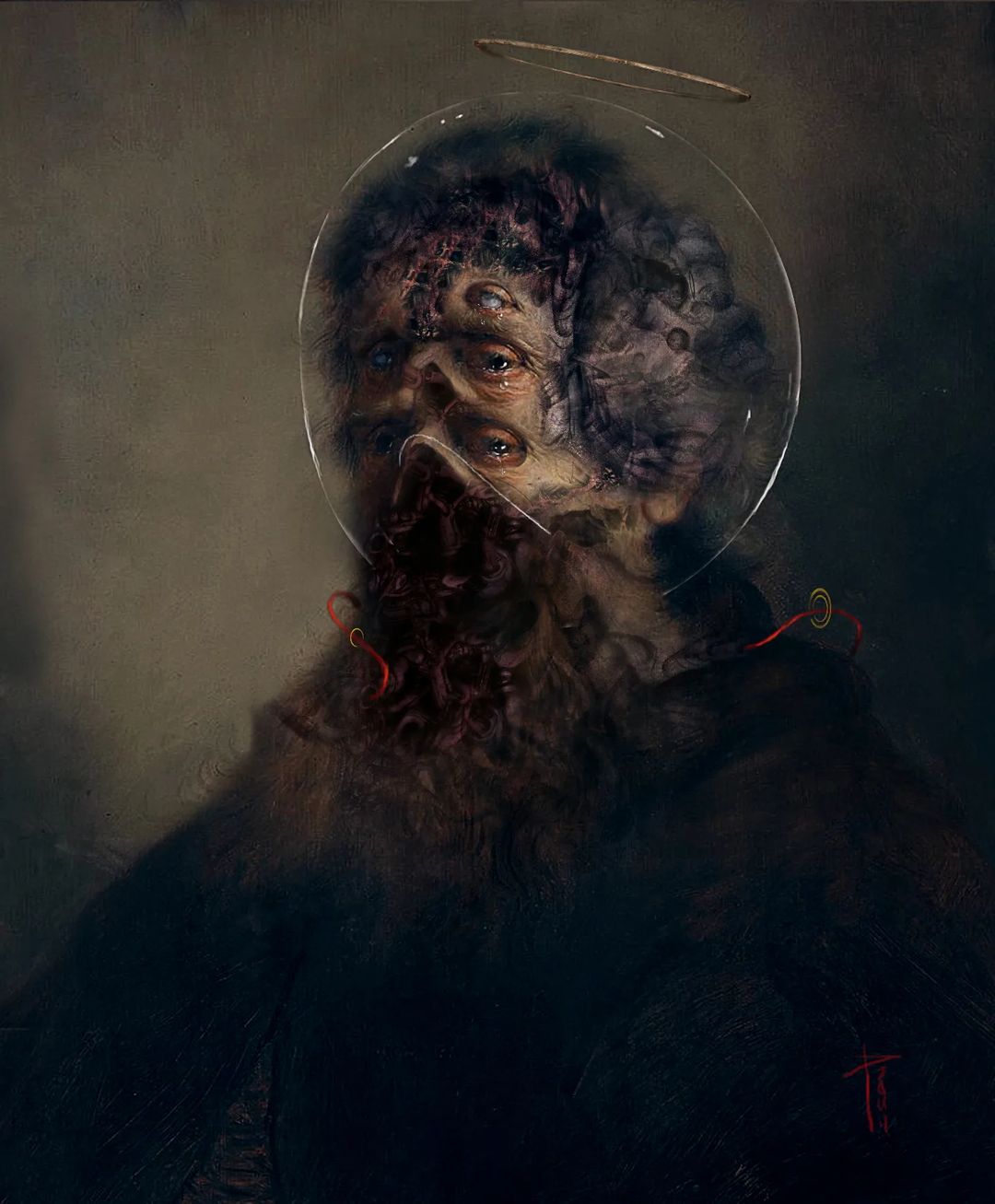b
Ghoulishly Beautiful Portraits by Roberto Diaz
The gory and rather sensationalist mixed-media creations of Roberto Diaz are wonderfully disturbing. Diaz combines traditional drawing with digital painting to execute darkly surreal portraits of dignified figures from past epochs, deformed by monstrous changes, additions, and appalling transformations. He uses a somber palette with warm, burnished tones which is evocative of the Old Masters, offset by the more lurid reds of the blood and grisly flesh. There is a constant tension and balance between the repulsive and the pleasing in all Diaz’s works.
A multiplicity of eyes, breaches in flesh, gaping maws, woeful signs of decay and ruin warp these subjects painted with a beautifully classical quality, who are often surrounded by a sort of halo or bubble of air. They are blessed – or kept alive – by graceful swirls of thin red tubes like veins or IV lines. The skeletal noses, stitches, and exposed subcutaneous flesh are reminiscent of rotting cadavers, while other distortions look as if their bodies had been cloven and fused back imperfectly. The tearfulness of some of these beings leads one to feel that they suffer terribly, with the ceremonial, grave sadness of those looking out at us from history. They possess the mournfulness and piety of old paintings, while at the same time they are corrupted by this macabre modern aesthetic which seeks to amalgamate and subvert all.
There is an alluring, palpable luster and glisten to the gore and viscera in Diaz’s paintings, the substance of the imperfect bodies. Unsubtle in horror, intensely impactful, the verisimilitude and level of technical achievement, the masterly chiaroscuro, draw in and seduce the eye. The juxtaposition between aesthetic pleasingness and sinister conception exploits our instinctual revulsion against perceived flaws and deformities in the human visage. This accomplishes a profanation of the allegedly divine, marries the lovely with the hideous, and evokes in us a delicious combination of disturbance and aesthetic gratification.



